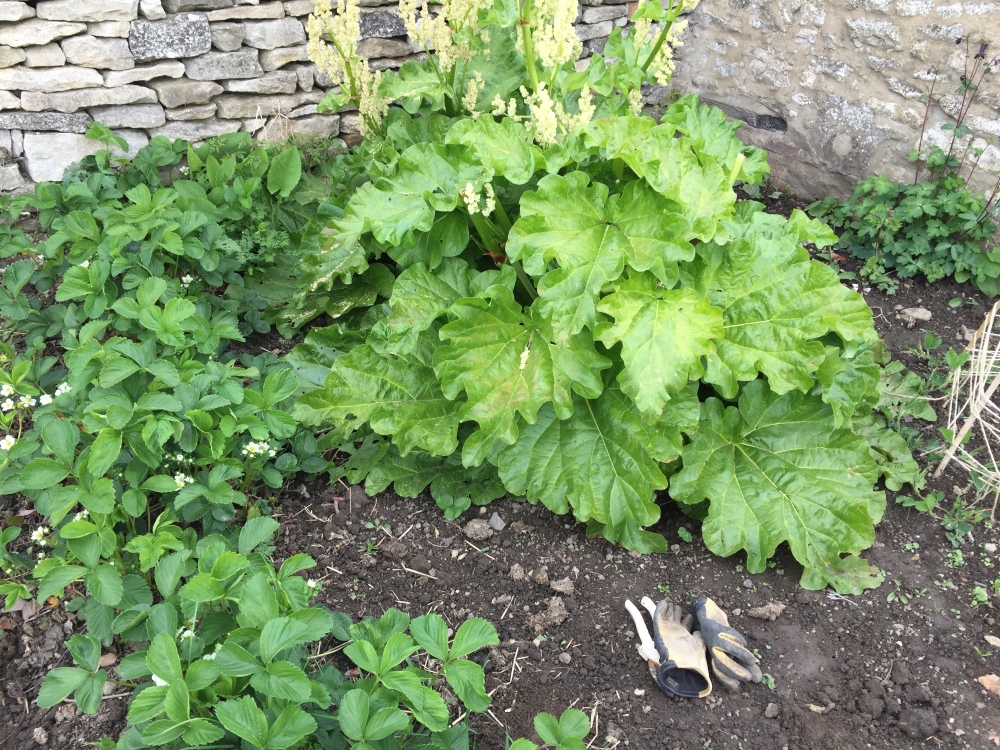
As you can see I had lots of rhubarb, although would have had more if I didn’t let it go to flower! Sooooo I decided to make some rhubarb wine, it’s the first time I have made it and I can’t wait to taste it. The recipe I followed was from First Steps in Winemaking by C J J Berry.
Equipment:
Bucket/fermenting vessel
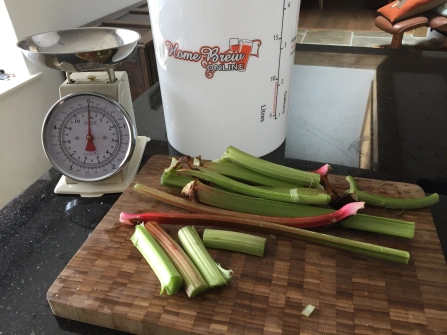 Demijohn with rubber bung and airlock
Demijohn with rubber bung and airlock
chef’s muslin
funnel
Stick on thermometer
Steriliser/sanitiser
Ingredients:
Rhubarb 1.25kg
Sugar 1.25kg
Water 4.5 litres (1 gallon)
Super wine yeast compound 1 heaped teaspoon per gallon
Campden tablet 1 crushed tablet per gallon at the end of fermentation to prevent oxidisation and bacterial infection.
- Firstly make sure all your equipment is thoroughly sterilised. Chop the rhubarb thinly, do not peel, and cover with the sugar in a bucket and leave for 24 hours until most of the sugar has dissolved.
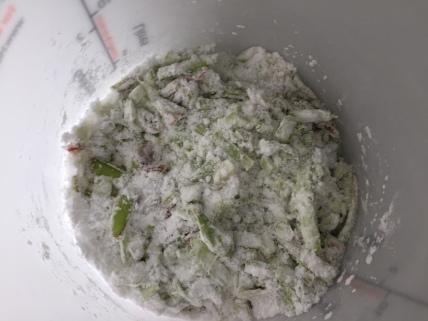
- The next stage is to strain the juice into your fermenter using chef’s muslin or an
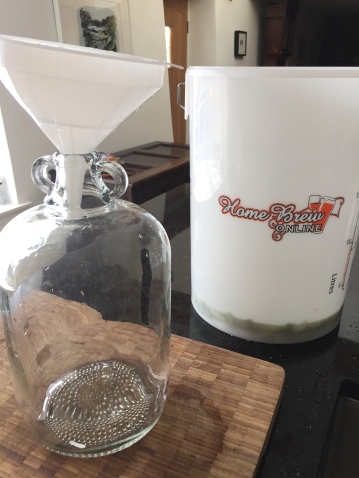 equivalent fine mesh straining bag and a funnel, keep mixing the pulp with water and straining until you have filled to the 4.5 litre mark in your vessel. I measured 4.5 litres with water in my demijohn and marked the level.
equivalent fine mesh straining bag and a funnel, keep mixing the pulp with water and straining until you have filled to the 4.5 litre mark in your vessel. I measured 4.5 litres with water in my demijohn and marked the level.
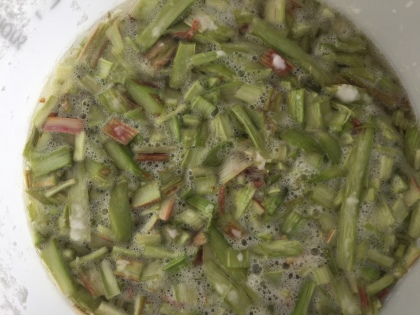
- Once your fermenter is filled to 4.5 litres add 1 heaped teaspoon of super wine yeast compound and leave to ferment at a temperature of between 16 – 20 degrees. I fermented mine at a low temperature so it took about three weeks to fully ferment. Because my fruit was very green the must is white in colour rather than red like some rhubarb wines. Once the bubbles stop rising through the airlock fermentation should be complete however I always check mine with a hydrometer, I take two readings 48 hours apart and if they are both the same I know it’s definitely stopped fermenting however if the second reading has changed I wait until both readings are the same before moving onto bottling.
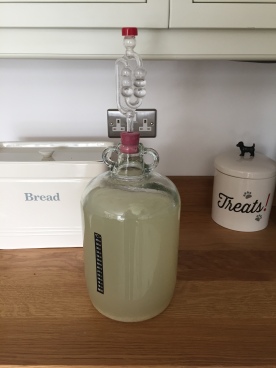
- It is important to make sure that the wine has finished fermenting before bottling because if the wine is still fermenting when transferred to the bottles it can cause them to break.
- At the end of fermentation add one crushed campden tablet, this will prevent oxidisation and any bacterial infection. Do not add this while the must is still fermenting as it will kill the yeast.
- Once bottled leave for at least two months to mature. Here is a selection of bottles and bottling equipment that you may find useful:
Glass wine bottles available in green or clear: http://www.home-brew-online.com/equipment-c40/glass-wine-bottles-p768
Small auto syphon: http://www.home-brew-online.com/equipment-c40/home-brew-online-easy-flow-small-auto-syphon-with-clamp-p1817
Simple syphon: http://www.home-brew-online.com/equipment-c40/youngs-simple-syphon-pack-p1310
Corks and corker: http://www.home-brew-online.com/search/corks
Happy Brewing!!

Don’t you need an aerobic ( with air) fermentation before the anaerobic fermentation?
That’s how I was taught
LikeLike
Hello
Yes you are correct and although the photo shows the demijohn with an airlock and bung there was already enough oxygen in the must to allow for aerobic fermentation (reproduction of the yeast) before the yeast then moved onto anaerobic fermentation (converting sugars to alcohol/CO2). The bung and airlock stop anything from dropping into the must and contaminating the wine. The airlock also allows excess CO2 to escape.
LikeLike
Is it possible to double up on ingredients – I have a LOT of rhubarb in my freezer – to make a 9 or 10 litre batch?
LikeLike
Hello, yes that’s fine.
LikeLike
I tried it some years back, but was not impressed as the rhubarb sugars seemed very reluctant to ferment. Mine took an age to clear and looked like pee-water when it had. Can’t say I liked the taste either. It was a shame because I have loads on the allotment.
LikeLike
That’s a shame, this one fermented and cleared quite quickly leaving the brew with only a slight colour to it. It tastes great, although it’s not quite as full as flavour as some other fruit wines, it has more of a delicate flavour about it.
LikeLike